Malcolm Flynn is spending six months with his family aboard the petrol-engined Mazda CX-8 Sport, to see how well the new sub $40k entry version stacks up with everyday use.
Mazda CX-8 2020: Sport (awd)
| Engine Type | Diesel Twin Turbo 4, 2.2L |
|---|---|
| Fuel Type | Diesel |
| Fuel Efficiency | 6.0L/100km (combined) |
| Seating | 7 |
| Price From | $29,480 - $35,530 |
| Safety Rating |
|
Part 1: April 12, 2020
Ask and you will receive. It sounds simple, but it certainly doesn’t always happen.
When the Mazda CX-8 first arrived in Australia in mid-2018, it seemed like the ultimate Goldilocks option to sit right between the massively popular CX-5 and the luxuriantly large CX-9.
It kept the 9’s seven seats but wrapped them in the narrower 5’s width and whittled down the overall length just a smidge.
But given the CX-8 was developed with only diesel-loving Japan in mind, there was no petrol engine in sight at the time. This kept the starting price $2490 on the wrong side of $40,000, which is a hot price threshold for many Australian families.
After driving the diesel CX-8 Sport and Asaki at its Australian media launch, I found the much cheaper Sport to be the pick of the two, and could only be made better with the availability of a petrol engine at a lower entry price. I presumed the CX-9’s turbocharged 2.5-litre would be the most likely candidate at the time, but Mazda went a step further with the price trimming and added the non-turbo 2.5 we know from the CX-5 in February. The result is actually within $250 of the equivalent CX-5, which admittedly also gets all-wheel drive.
Given that its $39,910 list price makes seven-seat Mazda motoring that much more accessible for Australian families, and it puts yet another twist on the CX-8’s CX-5/CX-9 Goldilocks formula, we’re putting it to the Flynn family test for six months.
.jpg)
Will we miss the extra size of the CX-9 Azami we tested last year? How much more petrol does it use than the CX-5 Touring we tested with the same engine the year prior? And how well does it stack up against the (link to each piece) Tiguan 132 TSI, Escape Trend, CR-V VTi-S, Golf R wagon, Santa Fe Elite, Carnival Platinum and Acadia LTZ we’ve lived with in the past? Stay tuned.
The petrol CX-8 Sport’s arrival on the market was actually timed almost perfectly with the early end of our Acadia LTZ long term loan due to the demise of the Holden brand. I say almost because there was a week before the CX-8 was available, and the good folks at Mazda Australia were kind enough to fill that gap with a CX-9 Azami. Or in other words, the perfect platform to see how much the CX-9’s extra size and Azami creature comforts matter to my family.
Externally, the CX-8 is 129mm narrower and 175mm shorter overall over the same long wheelbase as the CX-9, but the key measurements for my family relate to the width of the second row and the size of the boot area.
According to my measuring tape, the CX-8 second row is 100mm narrower at 1380mm, with the same 500mm between ISOFIX points for the middle occupant. That doesn’t translate to 500mm of actual room when two child seats are in the outboard positions, but it’s no less than the CX-9 and therefore able to fit a slim Grandma at a pinch.
The CX-9’s extra 100mm of overall width would be handy when it comes to squeezing in an extra child seat in the middle, but we’ll be finding out just how well the CX-8 copes with this scenario when baby #3 is due in July. Watch this space, literally.
In the meantime, our two forward-facing 0-4 child seats clicked and strapped into place in the outboard positions with no dramas using the two sets of ISOFIX points combined with the top tethers.
.jpg)
One other very interesting point is how much wider the CX-8’s back doors open than the CX-9. Mazda boasts a full 80 degrees for the CX-8, which can be pretty handy when you’re loading something as large as a toddler.
_0.jpg)
The difference in boot size is another interesting situation, with the CX-8’s official figures just 21 litres VDA smaller with the third row upright, and 35 litres VDA smaller with the third row folded flat.
In more relatable terms, my tape measure shows a boot floor length just 60mm shorter at 1220mm, with the same 1020mm width between the wheelarches. No matter how you look at it, there’s not much in it, and most of the CX-9’s extra body length is ahead of the windscreen.
Thankfully, the CX-8 also gets the CX-9’s sliding second row so you can increase boot floor length if less second row legroom is needed - as is the case with my two toddlers. I had it pushed all the way back when I took the above measurements.
Impressively, the CX-8 also matches the CX-9 in having it’s ‘40’ section of the second row split fold on the passenger side, meaning the third row can be accessed from the kerb side with minimal disruption. This is not the case for many seven seaters, including the Acadia.
As usual, this means little for my family given we don’t need the extra seats and always have a child seat mounted in this (safest) position, but it’s worth noting that the access gap with the seat fitted will limit the third row to smaller children.
_0.jpg)
The petrol CX-8 Sport’s fuel consumption was always going to be an interesting detail, given it weighs 141kg more than the mechanically identical CX-5 Touring (albeit missing AWD mechanicals) we’ve lived with, and 168kg lighter than the turbocharged CX-9 Azami LE we tested more recently. The CX-5 returned an overall average L/100km of 8.9 and the bigger and more powerful CX-9 tallied 10.56. So the CX-8 Sport should fit somewhere between them, despite carrying an official combined figure of 8.1L/100km. Note that like the others, the CX-8 petrol only needs cheaper 91 RON unleaded to do it best.
Our CX-8 Sport arrived with 1035km showing on the odometer, and like the rest of the world, we’ve cut back our driving a whole lot. We still managed 676km though largely thanks to one final trip to a remote beach before the weather gets too cold, and running across town to take Grandma to doctor’s appointments.
.jpg)
This gave us an average fuel consumption of 9.57L/100 for the month, which is bang on expectation, and only required one visit to the servo at the very end of the month due to the large 72-litre fuel tank.
Acquired: March 2020
Distance travelled so far: 676km
Odometer: 1711km
Average fuel consumption this month: 9.57L/100km (measured at the pump)
Part 2: May 12, 2020
It was always going to be another relatively quiet month for the CX-8 Sport, with the kids out of daycare and Mum and Dad both working from home.
But Grandma helped us still rack up another 702km over a couple of big runs across town as we helped her avoid public transport and brought her to stay with us for a while. Yes, I honestly invited my mother-in-law to live with us indefinitely...
These bigger trips with just two of us on board dropped our average fuel consumption for the month down to 9.15L/100km. Still a full litre off its official combined figure, but pretty good for such a big car with a relatively small petrol engine with no turbo assistance. I hope to match the official combined number on a solid motorway run in the near future.
There’s a few details I forgot to mention last month though. The CX-8 Sport unfortunately misses out on the back door retractable window blinds you get on the GT (at least $17,000 dearer) and Asaki, and it doesn’t even compensate with privacy glass. Fortunately my kids are now old enough to shield their eyes from the sun, but I really should dig up our window socks to protect them properly. I will have to do this when #3 arrives in July.
The Sport also misses out on electric seat adjustment (as fitted to the Touring for an extra $5400), which makes for a relatively flat seat base, even with the relatively short legs that come with my 172cm height. I get used to this after a while, but it is noticeable when stepping out of cars with adjustable under thigh support.
Ours also misses out on front parking sensors - a $793.95 option on the Sport, or standard on the Touring - which is a bit annoying and risky when you’re fighting for every available inch during a tight parallel park and you’ve only got the rear sensors to provide finite guidance.
_0.jpg)
The Sport’s lack of proximity keys may sound like a first-world problem if you haven’t lived with them before, but you do get pretty used to being able to walk up to a locked car and just open the door rather than having to pull the keys out of your pocket and find the right button to press. The world we live in...
On the plus side of the ledger, it’s fantastic to see that the base Sport gets active cruise control. Plenty of much cheaper cars now get it too, but there’s scores of much more expensive cars that don’t, and Sydney’s network of motorways and their varying levels of congestion are made much less frustrating with it.
It’s also great that the Sport gets three-zone climate control, meaning Mum and Dad can tailor the temperature in the second row to suit the kids, while enjoying individual climate zones up front. The centre console-mounted controls are within easy reach of toddlers who climb aboard though, so it takes diligence to regularly check that they haven’t wound the rear temperature up to 11.
I’ve also realised the benefits of being able to lock off the rear windows, now that both toddlers are now old enough to reach the window switches in their doors. In conjunction with the rear door child locks, it’s great to be able to ensure they can’t open their windows too with a tap of the button on the driver’s door.
_0.jpg)
Acquired: March 2020
Distance travelled this month: 702km
Odometer: 2413km
Average fuel consumption this month: 9.15L/100km (measured at the pump)
Part 3: June 5, 2020
With everyone keeping their distance and my family sticking within my house for the sake of our mutual health, the CX-8 had an even quieter time this month.
Given we’re now expecting #3 within weeks, I’ve wound up as the ‘hunter-gatherer’ for the household, taking on all supply runs to minimise our exposure. This has enabled the CX-8 to still rack up 375km, but this represents about 10 per cent of the distance we’d cover under normal conditions.
Given this was mainly short runs to the shops and back, our average consumption for the month moved up to 10.3L/100km. This is more than half a litre behind its official urban figure of 9.7L/100km, but still pretty good for a vehicle of this size. Things are starting to look up, so hopefully I can bring you that steady motorway figure next month.
One of these supply missions was to collect all the bedding gear for #2 to graduate from her cot, and I was once again surprised how tightly one can squeeze a single mattress into a box. It’s still a big box, but it managed to fit between the CX-8’s wheelarches no dramas. This theoretically means you could lay out a single mattress with all the seats folded, which is food for thought for anyone considering using their CX-8 for overnight adventures.
Now that we’re approaching the halfway mark with our CX-8 Sport, it’s interesting to note the features we’re not missing from the more expensive versions.
I’m yet to hear anyone moan about the lack of leather trim, for example. This is is probably more of an endorsement for my kids’ track record of not spilling anything on the cloth trim, which would be more of a pain to clean than cow hide.
I also haven’t once wished for the powered tailgate that comes with the GT and Asaki. Yes, it would be handy for when approaching with your hands full, but I’m enjoying how quickly the old-fashioned manual operation works when you’re in a hurry.
I’ve always found the relatively little 17-inch wheels (shared with Touring) quite ‘meh’ to look at compared to the sensuous Kodo detailing on the body. But the taller side profile of the tyres no doubt contributes much to its silky ride, and their anthracite colour is a good match for the colour of brake dust, so you needn’t ever wash them. Do you know anyone that doesn’t hate cleaning alloy wheels?
It’s too early to make a call on the Sport’s lack of seat heaters though, which may become more apparent as winter approaches.
Aside from the lack of front parking sensors, the CX-8 Sport’s safety credentials stack up well too.
On top of the standard items, I’m grateful for its high and low speed AEB, including low speed rear AEB and rear cross-traffic alert.
We haven’t used the third row seats yet, but it’s good to know the curtain airbags extend all the way to the back. This notably still not the case for its Kia and Hyundai rivals, which only cover the glass area rather than third row occupant heads.
The CX-8’s five star ANCAP safety rating is also still based on the relatively recent 2018 criteria. There’s plenty of models in this class which are based on much older standards.
Acquired: March 2020
Distance travelled this month: 375km
Odometer: 2788km
Average fuel consumption this month: 10.3L/100km (measured at the pump)
Part 4: July 10, 2020
Cupholders, USB points, multimedia interfaces and overall style eclipsed off-road ability and ruggedness as key challenges for SUVs long ago, but for many of us these days, nothing surpasses the ‘will it or won’t’ it question mark over the ability to fit three child seats across the back seat.
And this is now my reality, with my third baby staking its claim on this crazy world this month.
I’d proudly bought the third seat in the weeks leading up to this moment, double checked the available width and realised that our choice of three child seats had us butting right against the available space in the back of the CX-8.
As mentioned before, my measuring tape said this is 100mm narrower between the doors than a CX-9, so this could be the deciding factor for anyone tossing up between Mazda’s two big SUV options.
With a newborn, two year old and a three year old, the easiest solution for us has been to keep our existing two 0-4 child seats in the outboard positions (with the newborn in the rear-facing configuration), and our eldest graduating to a harnessed booster in the middle that should tie him over until he’s eight, and therefore no longer needing a child seat.
Interestingly, these harnessed boosters aren’t available to suit the sturdier ISOFIX attachments given the 33kg legal weight limit (combined child and seat), so it’s the ideal choice of our three to go in the middle position that doesn’t have ISOFIX points anyway.
The fact that the ISOFIX-attached outboard seats sandwich the middle seat firmly gives some peace of mind, and it also places our eldest in the best position to help pop the dummy back in etc for our youngest. Pro tip: Fit the middle one first, so you can access and tighten the seatbelt before it’s hidden by the other two seats.
So, our three child seats juuust fit in the CX-8. Thankfully.

Given that seat dimensions can vary considerably between manufacturers, models and types of seats, yours may well fit better. But my experience highlights the fact that anyone should try (or at least measure) before you buy, to make sure they fit at all.
Another lesson we learned from our previous experience with the CX-9 is that the top tether mounts on the back of the second row seat are mounted quite low, and therefore out of reach of our 0-4 seats when in the rear-facing position.
The CX-8 has the same problem, so I got around this by buying a top-tether extension strap. Clearly the CX-8 and CX-9 aren’t Robinson Crusoe in this regard.

With a rear-facing seat in the left position, third row access is now impossible from the left-rear door. You could get back there via the tailgate, but this also means you’ll only be able to use one of the two third row seats, and only if the boot is near empty to allow room to get in and out.
One area where the CX-8 clearly shines is the amount of room it leaves ahead of a rear-facing child seat for front seat occupants, thanks to sharing its generous 2930mm wheelbase with the CX-9.
With the second row seat slid all the way back, there’s ample room for my 172cm height to sit ahead of the child seat in comfort. In a CX-5 on the other hand (and a lot of other mid-size SUVs), I’m forced to move my seat forward significantly, to the point where my knees are almost touching the dashboard. This would be a deal breaker for passengers much taller than my modest height, and surely comes as a surprise to many when they fit a child seat for the first time.
As mentioned previously, the CX-8 Sport’s lack of retractable window blinds on the back doors (standard on the $17k dearer CX-8 GT) has forced us to fit aftermarket window socks to shield our newborn from the sun. These proved impossible to fit neatly and give each back door a desperate bank robber look, but do the job nicely.

With the public health situation easing off a bit in NSW, we’ve managed to almost double the kilometre count for the CX-8 Sport petrol this month to 665km, and some longer highway journeys dropped the average fuel consumption back down to 9.42L/100km. This is about halfway between what we experienced in our first and second months, but we’re still aiming for a solid motorway run to chase a number closer to the CX-8 Sport petrol’s 8.1L/100km official combined figure.
Acquired: March 2020
Distance travelled this month: 665km
Odometer: 3443km
Average fuel consumption this month: 9.42L/100km (measured at the pump)
Part 5: August 10, 2020
The fact that we’re now five months into our time with the CX-8 Sport petrol without any mention on this page of the engine’s performance says a lot about its real-world competence.
On paper, its 2.5-litre engine was always going to be a key element of this test, given the CX-8 weighs a fair bit more than a CX-5 with the same engine, but a fair bit less than a CX-9 that’s helped by a turbo. The most significant detail though is that the CX-8’s engine delivers much less maximum torque (252Nm vs 420Nm) at a much higher 4000rpm (vs 2000rpm). So the CX-8 petrol needs a lot more revs to deliver a lot less grunt.
The reality though is that it’s actually still quite good for general family driving. The only time I’ve wished for more under my right foot has been while overtaking on single lane highways. I don’t know about you, but I don’t find myself doing that very often though.
Outright performance aside, one other detail that large SUV buyers should be aware of is that the petrol CX-8’s 1800kg braked tow rating is 200kg less than diesel versions and all CX-9s, and in line with non-turbo CX-5s.
I mentioned earlier how comfortable the ride comfort is, but it will honestly rival many far more expensive options wearing premium badges. In most cases, it will easily surpass those optioned with the big wheels that come with AMG, M Sport, S-Line or F-Sport packs.

I’m also yet to sing the praise of the CX-8’s Apple CarPlay and Android Auto connectivity, which we can’t recommend strongly enough for any new car purchase, particularly one for families. The CX-8’s eight inch multimedia screen isn’t the biggest by current standards, but it didn’t leave us wanting for more.
One thing you might find limiting is that there’s only two USB points on offer. It’s not a big drama for us yet, as my kids are yet to discover devices, but given it’s designed to seat SEVEN people, this will be annoying for plenty of CX-8 owners who might like to charge more than two devices at a time.
It’s not the end of the world though, as you can easily expand this to four or more USBs by using an aftermarket adapter in the 12V socket in the front passenger footwell.
The ever-improving public health situation in NSW has helped us to double our distance travelled again this month, to a more normal 1183km. We’re still yet to manage a solid motorway run though, and the urban-heavy nature of our month pushed our average consumption back to 9.85L/100km, which is our second-worst month so far.
Acquired: March 2020
Distance travelled this month: 1183km
Odometer: 4626km
Average fuel consumption this month: 9.85L/100km (measured at the pump)
Part 6: September 22, 2020
Just when I thought we’d tried everything and knew everything about our CX-8 Sport after six months of family life, a casual chat with a neighbour revealed a surprising omission. There’s no cargo blind.
On closer inspection, the CX-9 also misses out on one, which means you miss out on the option of hiding your load from anyone peeking through the rear or side windows.
You do need to be having a good squiz in order to see what’s in there, but that’s just the sort of person you’d want to be hiding your belongings from.
Depending on the rate of vehicle breakins where you park, this may not be a concern, but it’s worth noting that the CX-5 does have a retractable blind, as do most other SUVs.
One omission I was aware of, but also didn’t miss is all-wheel drive. I have driven the CX-8 on plenty of dirt roads and in the wet, and it’s thankfully devoid of the annoying tendency to spin the front wheels from rest that you get in two-wheel drive versions of the torquier CX-9 and V6-engined large SUVs.

So less torque equals greater harmony in getting the CX-8 petrol’s power to the ground, without needing the extra weight and complexity of all-wheel drive.
If I spent a lot of time at the snow or lived on a dirt road, I’d probably think differently, but for general around-town use, the two-wheel drive has been totally fine.
On the ownership front, Mazda has thankfully joined other mainstream brands in moving to a decent five year warranty, with quite reasonable capped price servicing to eliminate most variables.
But be aware that the Machine Grey metallic paint our example wears will cost you an extra $495. It’s great for keeping the car looking clean and looks stunning when it really is clean, but ain’t free.
Our final month with the CX-8 Sport petrol has seen us cover the most ground yet, with a total of 1344km added to the odometer. I’m afraid we still didn’t manage to eke out its ultimate efficiency with a dedicated motorway run, but did manage to bring our monthly average back down to 9.6L/100km.
This is very close to the 9.67L/100km overall average we’ve tallied over six months and 4935km with the car. Given we’ve done a lot less long-distance travel in the past six months due to the public health situation, this average figure would likely be even lower without such a high proportion of urban driving.
As expected, this overall average is actually smack bang between the 8.9L/100km real-world average we experienced with the 2.5-litre CX-5 and the 10.56L/100km we saw with the bigger and more powerful CX-9 last year.
Note that like the others, the CX-8 petrol impressively only needs cheaper 91 RON unleaded to do its best.
The CX-8’s big 72-litre fuel tank deserves another shout out as well, given it gave us at least 700km of range between fills for all bar one tank of fuel. Such time between drinks is massively convenient when you’re generally carrying three little ones on the back seat.
So in summary, the addition of the Sport petrol to the CX-8 line-up has been well worth the wait. It is missing a few features that would come in handy for family use, but you’ve got to make some concessions at this price point.
It’s hard to think of a more accomplished seven seat family SUV for less than $45,000, let alone one $5000 cheaper again.
Acquired: March 2020
Distance travelled this month: 1344km
Odometer: 5970km
Average fuel consumption this month: 9.6L/100km (measured at the pump)
Pricing Guides
.png)
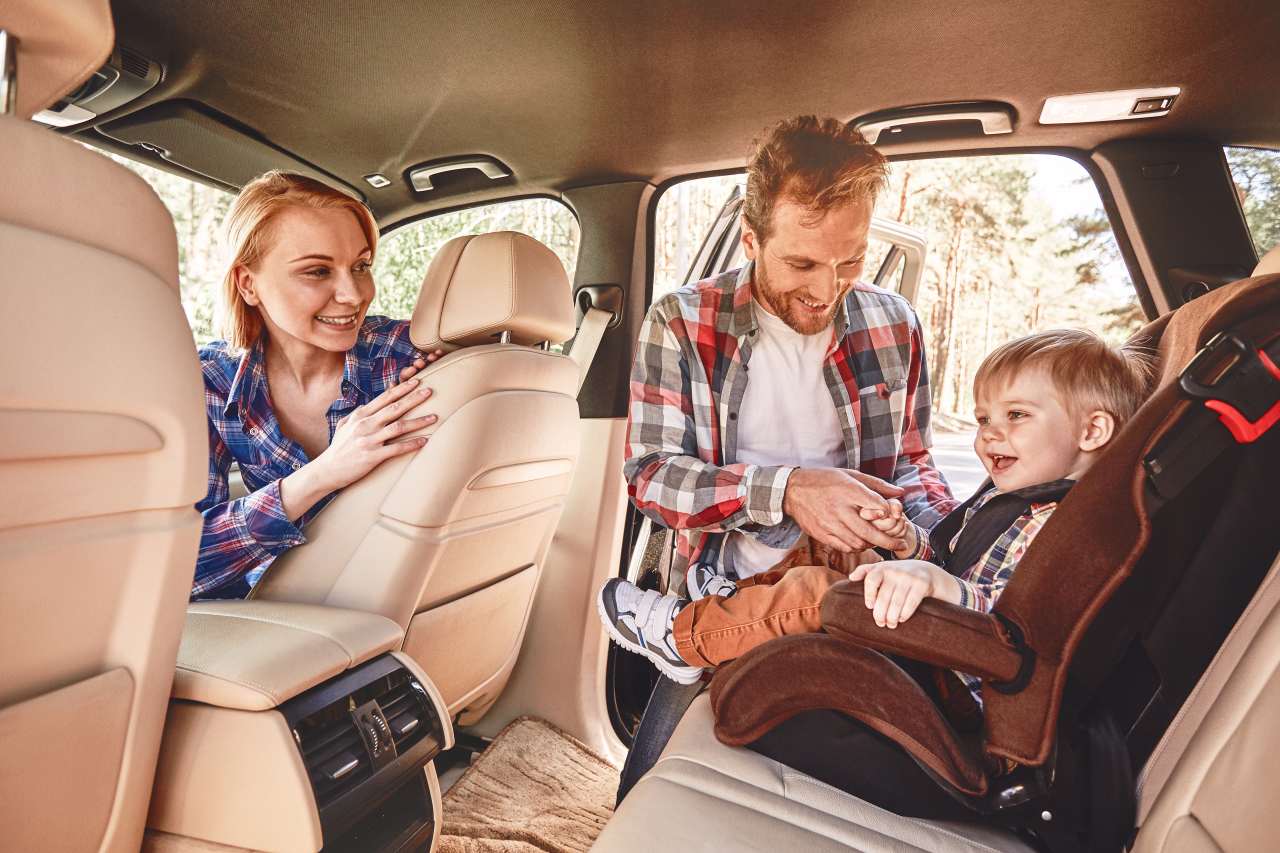

_0.jpg)
_0.jpg)
_0.jpg)
_0.jpg)
.jpg)
_0.jpg)
.jpg)
_0.jpg)








.jpg)
.jpg)


















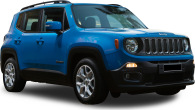









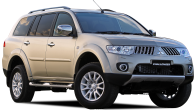




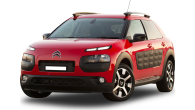




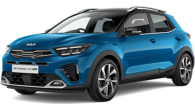


.jpg)

.JPG)

.jpg)

